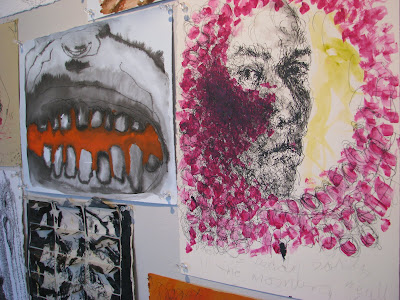
by Leila Bandar
In 1917, almost 100 years ago, a breakthrough in sculpture occurred; The Russian Revolution gave rise to a group of open-minded, passionate, and socially-aware artists known as the "Russian Constructivists". Prior to 1917 Tsars in Russia (and political elite in other countries, too) commissioned sculptors to create pieces representing political ideals and wartime achievements. Sculpture was often limited to men on horseback, depictions of military stories, and war memorials – or -- depictions of mythology and portraits of the wealthy. After the Russian Revolution, Constructivists as they were defined by Pevsner and Gabo would have a large impact on what we view as sculpture today - not just in Russia.
Using everyday materials - like plywood, cardboard, and plastic - Constructivists' artwork often exhibits an elegant, orderly look. One of piece which comes to mind from 20th C. Art History is by Alexander Rodchenko oval hanging construction #12 located in the Museum of Modern Art. Although the plywood is flat, the creativity of the sculptor transforms it to a mobile that seems to reference something grand as the Universe. A building material is transformed to make something sublime – a profound statement. It is also a political statement for social change: non-precious materials can allow proletariat hands to access the beauty, joy, and lifein everyday things.
Calza's work is about materials. It is about finding a material, something lost-then-found, learning about the material, and combining the material with other elements to make the piece reflect a memory and produce a feeling. Her drawings give voice to awkward, vulnerable, and uncomfortable emotions. Rather than feed into sculptural stereotypes of the last 100 years, hers quietly rejects authority, power, and control. In this way, Much acquainted...missing is a non-authoritarian body of work. It is everything opposite of coercive control and authority. It is a show that gives power to the non-dominant in the most literal way: she uses her non-dominant hand for all of her drawings. To me, it could be called "Anarchist Art". Instead of speaking of things that are in control and have the ability to control others, Calza calls on wobbly authenticity. Her left hand is allowed to feel, touch, experience what the right hand is generally in charge of! Her non-dominant hand cannot hide behind confidence, knowing, and exactitude. Instead, it is allowed to reveal its own squirm – lack of strength becomes a strength through repetition.

"Anarchist Art" is a term I would like to see used when an artist is does not seek control or express authority. I would like to see it used when a person explores a personal truth with genuineness and audaciousness; when an artist seeks to directly communicate raw, gut feelings; rather than "edit-out". Calza seems to "edit-in" which means: owning-up.
Part of “owning up” is acknowledging Calza's one mis-truth. She claims this body of work is about travel, but what we find are hundreds of deeply personal versions of self-portraiture. What about travel? What we find is not ABOUT travel but HOW to travel. Ultimately, it shows that to travel-with-oneself unmasked yet unafraid is what it means to be a good companion! And to be a good companion to others, one must be a good companion to oneself.
The grouchy, quarrelsome, and fussy inner-voices telling us "the weather isn't great", or "breakfast wasn't tasty enough", or "the plane ride is too long and bumpy" - all get a chance to speak - and by acknowledging those voices (calling them out) they become tame. Much Aquainted...missing has much to offer. And the best lessons are how to fully accept oneself, not to control others, to face the squirms of weaker parts of ourselves, and the demons too – they are ALL along for the ride.


































